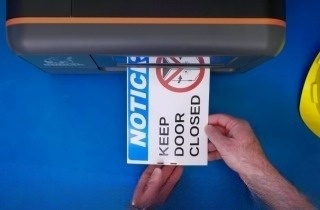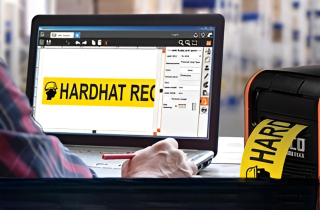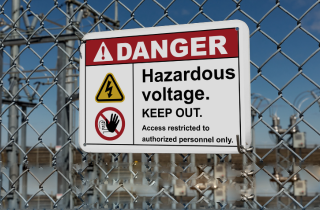Choosing Outdoor Labels That Withstand Harsh Environments

How to Label for Extreme Environments and Maintain OSHA Compliance
Labeling for extreme environments while maintaining compliance with the Occupational Safety and Health Administration (OSHA) requires durable solutions that withstand harsh conditions. Labels must remain legible despite UV exposure, moisture, chemicals, and temperature extremes. This involves using outdoor labels made from weather-resistant materials such as outdoor vinyl labels, paired with industrial adhesives and printed using labeling equipment for OSHA compliance. To meet regulatory requirements like OSHA 29 CFR 1910.145, labeling systems must preserve safety messaging under real-world conditions.
What Are Environmental Hazards That Challenge Outdoor Vinyl Labels?
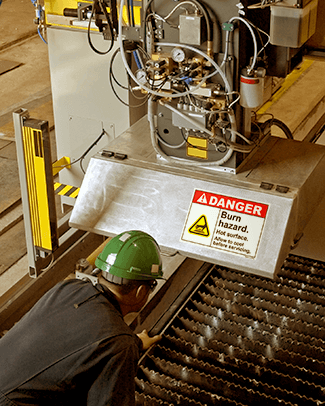
Maintaining OSHA-compliant labeling outdoors means accounting for the real-world forces that threaten durability and legibility. Industrial environments expose labels to a range of harsh conditions that can quickly undermine safety communication if the wrong materials are used.
- UV Radiation: Prolonged sunlight can cause inks to fade and label surfaces to degrade, making safety messages unreadable—especially on exposed equipment or signage.
- Extreme Temperatures: Heatwaves, freezing temperatures, and rapid fluctuations can weaken adhesives, warp label materials, or cause complete failure in outdoor labeling systems.
- Moisture and Humidity: Rain, snow, and high humidity can lead to peeling, smudging, or breakdown of standard labels—jeopardizing critical identification and warnings.
- Chemicals and Solvents: In many outdoor work environments, labels are exposed to oil, grease, cleaners, and other harsh chemicals that degrade both adhesion and print clarity.
- Abrasion: Heavy machinery, tools, and frequent contact can scrape or wear down labels, making important information difficult or impossible to read over time.
To overcome these challenges, specialized materials for printing labels are essential.
Materials That Make Outdoor Labels Compliant and Long-Lasting
After identifying the environmental hazards that can compromise labeling, the next step is selecting materials that can withstand those threats. The right construction is critical—not only for durability but also for maintaining legibility and adhesion as required by OSHA standards. Outdoor labels must be built to handle weather, abrasion, and chemical exposure without degrading.
Here are the most commonly used materials for creating safety labels in extreme environments:
Vinyl
Often the first choice for outdoor vinyl labels, vinyl is flexible, weather-resistant, and conforms well to irregular or curved surfaces. It offers excellent resistance to moisture, UV exposure, and many industrial chemicals—making it ideal for applications ranging from pipe marking to asset identification.
Polyester
Polyester is prized for its dimensional stability and resistance to tearing, UV radiation, and aging. These characteristics make it a strong choice for long-term safety labels placed on equipment or infrastructure exposed to sunlight and mechanical wear.
Polypropylene
Used in many industrial settings, polypropylene is especially useful in wet or oily environments. It resists water, oils, and mild chemicals—making it suitable for labeling machinery, tanks, or surfaces prone to frequent cleaning.
Aluminum
Rigid and incredibly durable, aluminum is often used when outdoor labels must survive extreme temperatures, corrosive environments, or abrasive contact. It’s commonly used in energy, utilities, and heavy manufacturing sectors.
Laminates and Coatings
To increase resistance to UV rays, moisture, and abrasion, laminates and topcoats are often applied over printed labels. This extra layer protects print clarity and ensures regulatory messages remain readable—key to supporting labeling equipment for OSHA compliance.
To print on these unique materials, you need an industrial label printer designed to produce rugged labels resistant to harsh environments.
Printing Technologies That Support Outdoor Label Durability
For outdoor labels to remain compliant and legible in harsh environments, print quality must match the durability of the material. Two primary technologies are used to create long-lasting, regulation-ready labels:
- Thermal Transfer Printing: Thermal transfer uses heat to apply ink onto the label surface, producing sharp, smudge-resistant prints that bond with durable materials. It's ideal for safety labels and chemical resistant labels exposed to UV, moisture, or abrasion.
- Digital Printing: Digital printing enables high-resolution graphics and variable data, often using UV-cured inks to improve resistance to fading. It's a flexible option for custom outdoor labels requiring both durability and visual clarity.
Both methods are compatible with industrial labeling equipment, helping facilities meet safety standards and reduce label failure in the field.
Best Practices for Creating OSHA-Compliant Outdoor Labels
To prevent label failure—and the compliance violations or safety risks that come with it—organizations must take a proactive approach to label design and application. Following these best practices helps ensure that outdoor labels remain durable, readable, and regulation-ready in any environment.
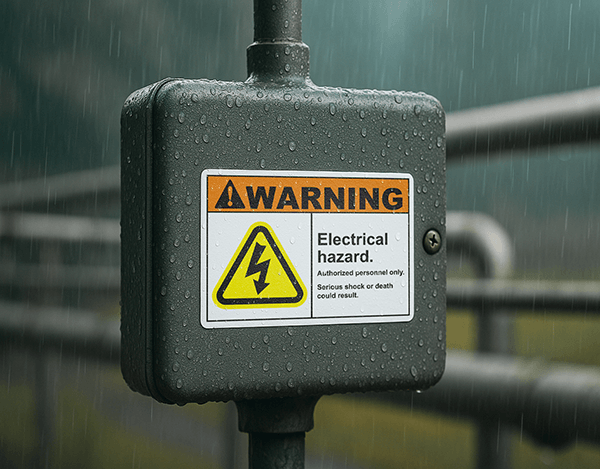
- Design with Durability in Mind: Use bold, high-contrast fonts and simple layouts that remain legible even after prolonged exposure to UV or dirt. Prioritize readability for safety labels used in high-risk areas.
- Select the Right Adhesive: Adhesive strength is just as important as label material. Choose adhesives rated for temperature extremes, moisture, and textured surfaces to prevent edge lifting or label loss.
- Use Protective Overlaminates: For added defense against UV rays, abrasion, and chemicals, apply a clear overlaminate. This extends the life of both the label face and printed content.
- Conduct Field Testing: Before rolling out new outdoor labels across a facility, test them in actual conditions—heat, humidity, surface type—to verify performance.
- Ensure Regulatory Compliance: All safety labels used for hazard communication or equipment ID should meet relevant standards. Using trusted labeling equipment for OSHA compliance helps streamline this process.
Solving Multiple Labeling Challenges with the Right Tools
Creating durable, compliant safety labels for outdoor environments means addressing multiple hazards at once—UV exposure, moisture, temperature shifts, chemicals, and abrasion. Without the right labeling strategy, critical information such as warnings, identification, and compliance details can fade, peel, or disappear over time.
That’s why many industrial facilities rely on all-in-one solutions like the DuraLabel Toro Max Industrial Sign and Label System, which combines rugged portability with the ability to print weather-resistant outdoor labels in the field. When paired with the right materials and layout, high-performance printers help teams maintain accuracy, visibility, and OSHA compliance in even the harshest environments.
DuraLabel Resources and Outdoor Labeling Solutions
Creating effective outdoor labels starts with using the right tools—both in the field and in the planning process. For teams working in extreme environments, the DuraLabel Toro Max Printer offers a powerful, portable solution. This mid-size, all-in-one printer is built to produce weather-resistant outdoor vinyl labels, handling a wide range of applications from safety labels and arc flash signs to pipe markers and asset tags. With features like supply recognition, auto-calibration, a full-size keyboard, and touchscreen, the Toro Max supports real-time labeling in the most demanding environments—making it the ideal choice for organizations that depend on labeling equipment for OSHA compliance.
To support your labeling strategy beyond the hardware, DuraLabel also offers a suite of expert-created resources. The free OSHA Signage Quick Start Guide helps teams understand key regulatory requirements and apply them to their safety signage and labeling systems.
Still have questions about the right equipment and supplies for your facility? Contact a DuraLabel safety expert at 1-888-411-3520 for personalized guidance on choosing the right materials, printers, and labeling solutions for your environment.
Read Next:
DuraLabel’s Tough-Tested Process: Raising the Bar for Label Durability
Related Resources

Why Tough Mechanical Environments Require Durable Labels
Unlike normal adhesive stickers, industrial labels must resist harsh conditions that quickly degrade ...
Read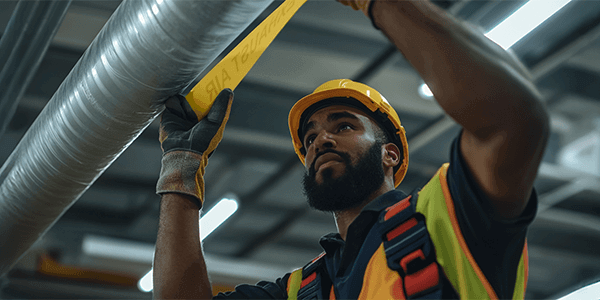
Why Custom Industrial Labels Matter for Mechanical Job Sites
How Do Custom Industrial Labels Improve Safety and Organization on Job Sites? Mechanical job sites are ...
Read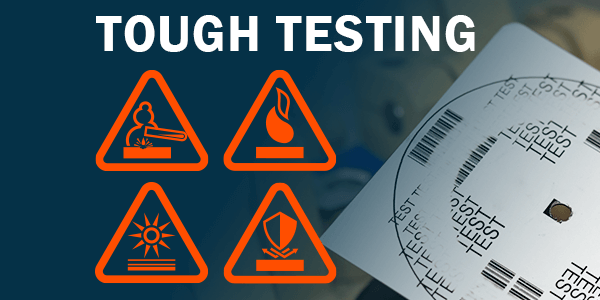
DuraLabel’s Tough-Tested Process: Raising the Bar for Label Durability
How DuraLabel's Tough-Tested Process Ensures Reliable Industrial Labeling At DuraLabel®, we are committed to ...
Read.png)

